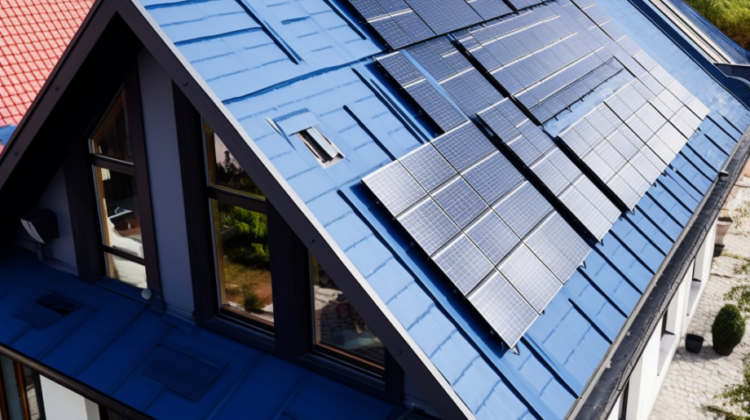
Over the past few years, solar panels have gained popularity as an energy-saving and environmentally-friendly option for households and businesses alike. As a result, people often wonder if the color of solar panels has any impact on their effectiveness or output. This article delves into the subject of solar panel colors and investigates whether they have any significance.
First, it is essential to understand the science behind how solar panels work. Solar panels are made up of photovoltaic (PV) cells designed to convert sunlight into electricity. When sunlight hits the PV cells, it causes an electron flow, generating an electrical current. The more sunlight hits the panels, the more electricity they can produce.
The color of a solar panel can affect its ability to absorb sunlight and, therefore, its efficiency. Typically, solar panels come in two colors: blue and black. Blue solar panels are made with polycrystalline cells, which have a lower efficiency rate than black solar panels, which are made with monocrystalline cells. Monocrystalline cells are more efficient because they are made from a single silicon crystal, which allows them to absorb more sunlight.
However, it is essential to note that the color of the solar panel itself does not affect the efficiency of the PV cells inside. The panel’s color is determined by the materials used to encapsulate and protect the cells from the elements. This means that the color of the solar panel may affect its overall appearance, but it does not impact its ability to generate electricity.
Some solar panel manufacturers are now offering a range of different colors and finishes to make solar panels more aesthetically pleasing and integrated into the design of buildings. For example, some manufacturers provide solar panels in shades of gray, brown, or even red to match the color of the roof or other building materials. Even solar panels are designed to look like roof tiles or shingles, allowing them to blend in seamlessly with the rest of the roof.
While the color of the solar panel may not impact its efficiency, there are other factors to consider regarding solar panel performance. For example, the angle and orientation of the panels can affect their ability to absorb sunlight. Solar panels should be installed facing south in the Northern Hemisphere and north in the Southern Hemisphere to maximize exposure to sunlight. The angle of the panels should also be adjusted to match the latitude of the location where they are installed. Additionally, shading from trees or nearby buildings can decrease the amount of sunlight that hits the panels, reducing efficiency.
The quality of solar panels is another important aspect to take into account. Solar panels are not all identical, and lower-priced panels may not be as efficient or durable as higher-end ones. Prior to buying, it is crucial to conduct research on various brands and models of solar panels, and to opt for a trustworthy installer who can provide expert advice on the best choices to suit your individual requirements.
The color of a solar panel does not directly impact its efficiency or performance. While black solar panels may be slightly more efficient than blue ones, the panel’s color is determined by the materials used to encapsulate the PV cells and protect them from the elements. However, the angle and orientation of the panels and any shading or obstructions can impact their ability to absorb sunlight and generate electricity. Choosing high-quality solar panels from a reputable manufacturer and installer is also important to ensure maximum performance and longevity. Ultimately, deciding which color of solar panel to choose may come down to personal preference or aesthetic considerations rather than functional ones.